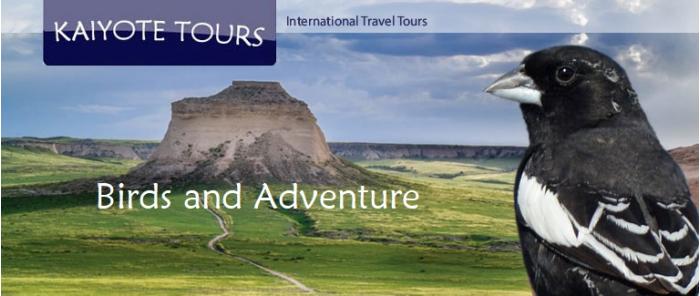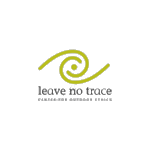Colorado Birding and Wildlife Viewing Tours

If you are interested in Colorado Birding and Wildlife Viewing Tours, come and join us at Kaiyote Tours!
We organize birding and nature tours throughout Colorado. We offer a complete range of activities and tours in Rocky Mountain National Park. Please go to that page for more info on tours within Rocky Mountain National Park.
Custom Tours: You can choose lodging at either campgrounds or hotels. Please let us know if you have specific birds and/or wildlife that you would like to see and how many days you would like to tour Colorado. Please request an itinerary and we will send you the day to day details of the tour.
Single Day Trips: If you only need to book a tour by the day and will supply your own lodging, the price is $420 per day for 1 - 3 people, please contact us for 4 or more people
Call us at 970-556-6103 or email us at KaiyoteTours@gmail.com to book your trip!
The Colorado Big Loop Tour:
The extreme changes in Colorado elevation creates habitat diversity: Arid high plains, grasslands, shrublands, foothills, montane, sub-alpine, alpine and riparian areas. This tour will visit areas of elevation from 4,865 to 12,183 feet. The diversity of plants, birds and animals is something to experience. The landscape is spectacular.
Printable Bird List
(This is a checklist of birds that we have seen on this trip)
How many birds will we see? We hope to see every bird on the above trip list and more!
Lodging: This tour is a "car-camping" tour. We will be staying at national park campgrounds and national forest campgrounds. We will see more birds and wildlife while staying at the campgrounds as compared to staying at hotels. We have wonderfully comfortable tents and sleeping pads.
Food: Breakfast will be cooked on the grill or on the fire at camp. Lunch will be picnic style, sandwiches, fruit, etc. Dinner will be cooked on the grill or on the fire at camp. We travel with a mini-Weber charcoal grill and also a Coleman 2-burner gas stove. We can grill steaks, hamburgers, chicken, or fish. Sometimes we have hotdogs and s’mores on the fire. We also travel with a Dutch Oven and cook shrimp stir-fry, pasta dishes and other delicious meals. We can accommodate vegetarians and vegans, no problem!
Camping Gear: You will have a tent with plenty of room. For example, we put 1-person in a 2-person tent and 2-people in a 3-person tent. We use Therm-a-Rest air-filled sleeping pads with a foam core, usually 2 - 3 inches thick. On top of the mattress, we place a thick soft sleeping bag and sheet. On top of this, you will get a warm sleeping bag to sleep in. You will be comfy and cozy! You are welcome to bring your own gear.
Campsites: Whenever possible, every will get their own campsite. We don't try to cram everyone into one or two sites. We will have plenty of space to spread out.
Electricity: We travel with a lithium generator, and you will have access to power for recharging your equipment.
Campfires: Most all locations permit campfires (when there is not a fire ban).
Showers: There are pay-showers at most of the local and state park campgrounds, but not at national parks and federal land locations. We also travel with a camping solar "rain-shower" for hot water.
Details
- Travel Dates: June 14 - 27, 2026, spots left = 0
- Group Size: 4 travelers
- Trip Length: 14 days
- Rates: Rate per person = $4,550
- Rates include: Breakfast on days 4 - 13, lunch on days 2 - 14, dinner on days 1 - 14, campground fees, and camping gear.
- Not included: Airfare to Denver (DEN), hotel stays at the Denver airport (4-nights)**, breakfast on days when you are staying at a Denver hotel, snacks in between meals, alcohol, and entrance fees into national parks. If you have a national park pass, please bring it along.
- Adventure level: Easy, please check "Welcome" page for definition
**There are numerous hotel choices in the Denver Airport area located on or along the Tower Road area. You will need to book hotel stays for the nights of June 14 and 15 (2-nights), 26 and 27 (2-nights) .
Gear you need to bring: The mountains can sometimes be cold and windy, even in the summer, and the desert areas will be hot.
1) Day pack for your gear
2) Rain gear for both rain and wind
3) Refillable 1-liter water bottle
4) Sunscreen and bug spray
5) Hat for sun, hat for warmth, lightweight gloves, neck gaiter
6) Binoculars, camera
7) Layered comfortable clothes
- Price: Car-camping tours are $325 per person, per day. Tours at hotels/cabins are $435 per person, per day, based on double occupancy. Please contact us for solo traveler hotel rate.
- Not included: Entrance into national parks, national wildlife refuges, state parks, museums, etc. (if you already have a pass, bring it along).
- Hotel Tours include: Lodging, meals, and transportation.
-
Car Camping Tours include: Campsite fees, food, camping gear, and transportation.
Payment and Cancellation Policy
Single-day tours: Full payment is due 72 hours prior to tour. There are no refunds within 72 hours of tour.
Multi-day tours: A non-refundable payment of $800 per person is required to reserve a spot on a trip. Full payment is due 6 months prior to departure date. If you are reserving a spot within 6 months of start date, full payment is required to reserve a spot.
We accept Visa, MasterCard, American Express, and Pay
14-day Colorado Big Loop Tour
This itinerary describes the “car-camping” tour. If you choose to join a tour that provides hotels/cabins, the stops and locations are approximately the same. We recommend the camping tour because we will see more birds and wildlife while staying at the campgrounds. We have wonderfully comfortable tents and sleeping pads.
Birds: I have not included any daily bird sightings in the itinerary. Please read the bird list for this trip to get to know the birds we will see.
Day 1, Denver: You are responsible for booking your own flight into the Denver airport (DEN). You will be met at the airport and transferred to your hotel located on or along the Tower Road area. Your hotel for the next 2-nights is not included in the price of the tour and you are responsible for booking your own hotel. We recommend booking a flight that will arrive midday or early afternoon. We will be having a group dinner on this arrival day.
Day 2, Denver: From the Denver airport, it is a 20-minute drive to Barr Lake State Park. This is an excellent place for birding, and we will spend the morning here. Other stops for the day include the Rocky Mountain Arsenal National Wildlife Refuge, (this area used to be a weapons manufacturing plant, making a lot of truly horrible chemicals and weapons, but has since become a wonderful place to view bison, prairie dogs, and birds because when people moved out, wildlife moved in. We will also visit Waneka Lake, and the Saint Vrain Greenway Belt.
Day 3, Penitente Canyon: From our lodging along Tower Road, it is a 5-hour drive to our camping spot located at Penitente Canyon, close to the town of La Garita. We will be taking the scenic route and stopping at a few birding locations close to Colorado Springs, Pikes Peak, and the Florissant Fossil Beds National Monument. Penitente Canyon is an excellent birding location, and we will spend the late afternoon setting up our camp and birding the campground. Penitente Canyon is at the edge of the La Garita Caldera which is an extinct super volcano which is responsible for the second largest explosion on earth. The rocks in Penitente Canyon are remnants of up to 18 volcanic eruptions that took place in the San Juan Volcanic Field between 20 and 30 million years ago. The largest of these eruptions spewed 1,000 cubic miles of ash 27.8 million years ago, creating a huge underground chamber. Rocks overlying the chamber collapsed to create the La Garita Caldera. At Penitente there are no showers and only pit toilets. There are showers available in town for $10, but we will have hot water for washing, and also an outdoor camp “rain shower”.
Day 4, Great Sand Dunes National Park: From our camp at Penitente canyon, it is a 1-hour drive to the Great Sand Dunes National Park. We will spend the day here visiting the dunes and birding the nature trails and the 4x4 road. The lowest point at the Sand Dunes is about 8,100 feet, and the Mosca Pass trail ascends to 9,300 feet. The Montville nature trails has little elevation gain.
Day 5, San Luis Valley: The San Luis Valley in Colorado covers approximately 8,192 square miles. This makes it the largest alpine valley in the world and larger than several US states, including Massachusetts. The base elevation of the San Luis Valley is about 7,500 feet. The Sangre de Cristo Mountain Range, which overlooks the valley, has some of the tallest peaks in Colorado. Eight peaks are over 14,000 feet with Blanca Peak (14,351 feet), being the highest peak in the Sangre de Cristo Range and the fourth highest in Colorado. Crestone Peak (14,300 feet) is the second highest peak in the Sangre de Cristo Range and the seventh highest in Colorado. Just west of the valley, high up in the San Juan Mountains is the headwaters to the Rio Grande River. As the Rio Grande passes through the Monte Vista and Alamosa areas, the river creates beautiful wetlands. We will visit both the Alamosa and the Monte Vista National Wildlife Refuges, and several small parks in the area.
Day 6, Mesa Verde National Park: From Penitente Canyon, it is a 4-hour drive to Mesa Verde National Park where we will be staying at the edge of the park at the Morefield campground for 2-nights. This campground has showers and modern facilities. Birding stops along the way included: Wolf Creek Pass, Chimney Rock National Monument and Great Kiva, Huck Finn Pond, and numerous roadside stops.
Day 7, Mesa Verde National Park: A full day birding the campground area, trails, and historic sites at Mesa Verde National Park.
Day 8, Black Canyon of the Gunnison National Park: From Mesa Verde, it is a 4-hour drive, it will take longer than that however, because it is one of most spectacular drives in Colorado, to Black Canyon of the Gunnison National Park. We will be camping for one night at the Curecanti National Recreation Area. Here you will have an opportunity to go swimming, although the water is a little cold.
Day 9, Dinosaur National Monument: From our campsite at Curecanti, it is a 4-hour drive to our next campground at Dinosaur National Monument. Although the campground is close to Jensen, Utah, most of the monument is located within Colorado.
Day 10, Rocky Mountain National Park: On this day we head to Grand Lake and Rocky Mountain National Park. It is a long drive, but we will have many awesome birding stops. The main stop will be the Arapaho National Wildlife Refuge. This refuge supports diverse wildlife habitats, including sagebrush steppe uplands, grassland meadows, willow riparian areas, and wetlands. This 23,464-acre refuge was established in 1967 primarily to provide suitable nesting and rearing habitat for migratory birds. The refuge is excellent for birding. It is situated at an elevation ranging from 8,100 to 8,700 feet, making it the highest refuge in the lower 48 states. There is a 6-miles driving loop and an easy .5-mile nature trail where we often see moose. From here we will head to our camp situated on Lake Granby in the Arapaho National Recreation Area where we will camp for 3-nights. The elevation of Lake Granby is 8,300 feet.
Day 11, Rocky Mountain National Park: Rocky Mountain National Park is amazing, and we will get to spend two full days here. Trail Ridge Road, which summits at an elevation of 12,183 feet is the highest continuous paved road in the United States. There will be numerous stops and short walks along the way. We will spend the day walking the trails and travelling the roads of Rocky Mountain National Park in search of birds and wildlife. Rocky Mountain National Park is spectacular to say the least.
Day 12, Rocky Mountain National Park: A second full day in the park. Over 300 different species of birds have been identified in Rocky Mountain National Park. The park covers 267 acres, 416 square miles and has 359 miles of hiking trails. Our last night in the mountains will be a stargazing night. We don’t have a telescope, but we love to go into the National Park at night and look for shooting stars, falling meteorites, the Milky-way and orbiting satellites. We will teach you about the constellations of the sky. The mountain sky is truly clear and on a moonless night, you will be amazed about the number of stars in the sky. Or if there is moonlight, it is so bright you do not need a flashlight.
Day 13, Denver: From our campsite to the Denver airport, it is a 2.5 hour drive, so we will have plenty of time to visit more birding sites in the area. In the morning we will have time to visit Shadow Mountain Reservoir and the Colorado River. In the afternoon, on our way to Denver, we will take a drive up Blue Sky Mountain to look for birds and Mountain Goats. The summit of Mount Blue Sky (formerly Mount Evans) in Colorado is 14,265 feet (4,348 meters) above sea level. The Mount Blue Sky Scenic Byway, which is the highest paved road in North America, reaches a height of 14,130 feet (4,307 meters). This road dead-ends at the summit.
Day 14, Denver: We will spend the morning birding areas near Briggsdale, Severance, and roads that are adjacent to the Pawnee Grasslands. The elevation is 4,800 feet. After lunch, we will head to Castlewood Canyon State Park for an afternoon of birding this beautiful area with easy walking trails.
Departure day: June 28th you are on your own. Most hotels in the Denver Airport area have shuttles to the airport for your return to the airport for your flight home.











 Follow
Follow

